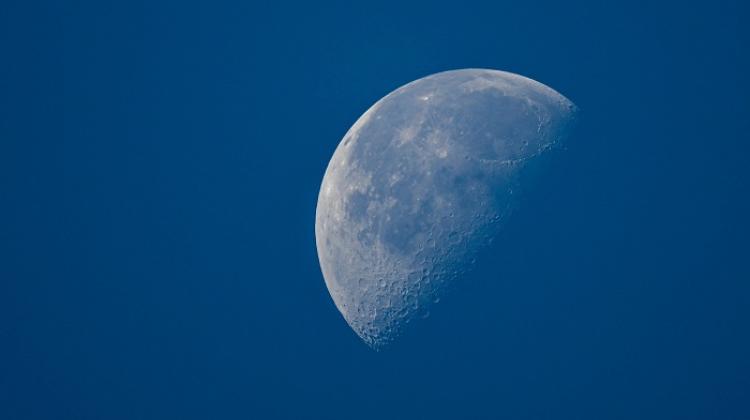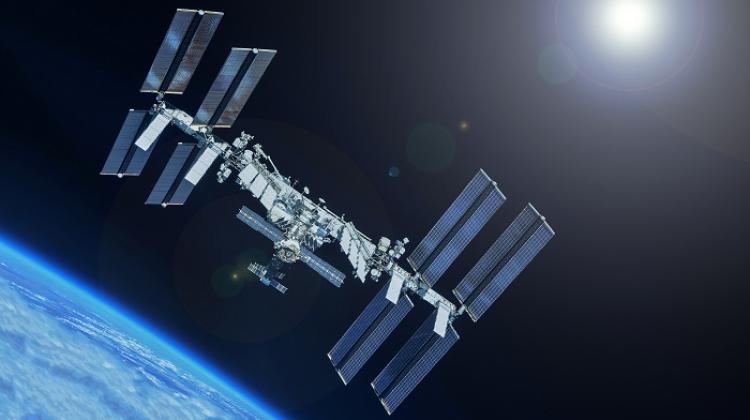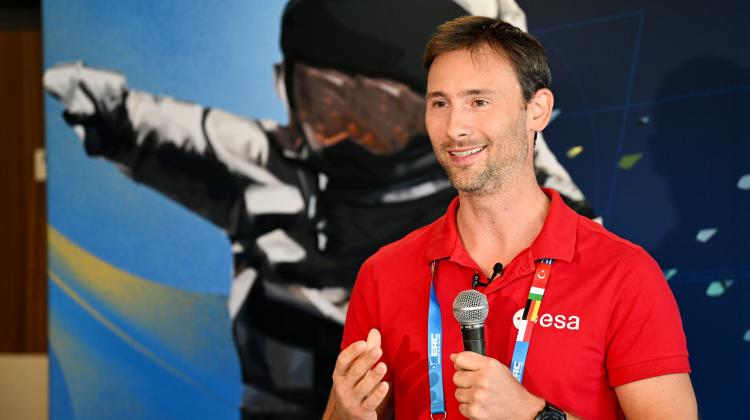Uznański will fly into space if Poland builds strategy
Whether Sławosz Uznański will fly into space depends on building a strategy between Poland and the European Space Agency.
In November, the European Space Agency announced the names of the astronauts of the primary and reserve corps astronauts. One of the 11 reserve astronauts is Uznański, who works at CERN in Switzerland. In an interview with PAP, he said that his flight into space depended on diplomatic steps and building a strategy between Poland and the European Space Agency.
Uznański specializes in the study of the effects of cosmic radiation on humans. This is one of the greatest challenges of astronautics.
He told PAP: “I think that this is one of the aspects of my education and experience [research on the effects of cosmic radiation on humans - PAP] that are valuable for the agency; I also hope that the European Space Agency will use it.”
He also explained why this topic was so important.
He said: “The effects of cosmic radiation on humans are a huge challenge. We know that we are able to sustain life in low Earth orbit. In the past, we had Moon exploration missions with NASA, but if we are talking about a journey to Mars - these doses are very, very high, for today, they limit where we can go in space. We have a lot of work to do when it comes to technological and medical aspects, and a large part of the scientific research needed to be able to plan a mission and fly."
When asked what a space mission that he could play an important role in would be about, he spoke about the scientific experiment with the AMS detector.
He said: “We have a large scientific experiment on the International Space Station, which is called AMS, and an improvement of this experiment is being prepared. We will install a new version of the detector, and today I would be a really good candidate to carry out such a mission.” He emphasized that 'we need to build a strategy'.
The AMS detector was launched in 2011. It was one of the final launches of the Space Shuttle Endeavour. The detector is used in scientific research in the field of cosmic and intergalactic radiation, as well as the search for dark matter.
Uznański said: “These are big questions in physics: what is dark matter, how does it affect the expansion of our Universe? We cannot answer these questions. The detector needs to be improved, because its functions are no longer sufficient. We would like to have a better resolution of this detector, so it will be expanded. This, of course, will require a flight to the International Space Station, delivery of equipment and spacewalks that will allow to manually install new systems for this detector."
Asked about the AMS detector's position in the hierarchy of space missions, Uznański said: 'For CERN as a particle physics organization, it is one of our main detectors in space. It is visible and important for the organization. For ESA, it is of course one of the experiments in outer space - buy on the International Space Station it is among of the main and largest ones'.
Speaking about the decision-making process regarding new space missions and their topics, he continued: “It is a long-term strategy for Europe, and an international strategy for the International Space Station. We had very positive information from the last ministerial council in November, where we were also announced as astronauts, but also funding for the International Space Station was extended until 2030.”
When asked about his memories from the astronaut recruitment process (which took a year and a half), Uznański said that communication and psychological tests were among the most interesting stages. For example, he was asked to imagine that he was in outer space and was ordered to return to base. The question was: what would you do if you had a colleague with you who had disappeared from view?
Uznański said: “There was a whole panel of psychologists and psychiatrists watching me, and the person who asked the question was a retired astronaut who had probably been in this situation in the past. The strong part of my answer was to first express my feelings in the given moment - that I felt uncomfortable and I was not ready to accept this order to leave someone outside. I needed a few minutes and some analysis to ask questions, gather information and be able to make a decision. I fought for time to make a decision.”
The astronaut admits that he practices making decisions regarding teamwork and time pressure on a daily basis while working at CERN.
He said: “I think that after working at the CERN control centre I am used to coordinating many tasks at the same time and making quick decisions. I feel confident in group dynamics and under the pressure of time and emotions that these situations generate.”
He added that the safety of astronauts is a priority with an even higher status than the space mission itself. “In fact, the mission objective itself is secondary compared to the safety of the team. The priority is the safety of astronauts. This is not just a game played by a group of people who are in a spacecraft or on the International Space Station - it also includes experts and doctors on Earth. Communication is incredibly important.”
Shortly after the announcement of the names of the new ESA astronauts, the President of the Polish Space Agency POLSA, Professor Grzegorz Wrochna declared that the Polish Space Agency would 'intensively work to create an idea for a mission, in which our astronaut would be necessary'. “We should develop such experiments and tasks that we could propose to the European Space Agency - so that our astronaut could fly to the ISS and carry out these experiments,” he said.
PAP - Science in Poland, Urszula Kaczorowska
uka/ zan/ kap/
tr. RL
Przed dodaniem komentarza prosimy o zapoznanie z Regulaminem forum serwisu Nauka w Polsce.


















